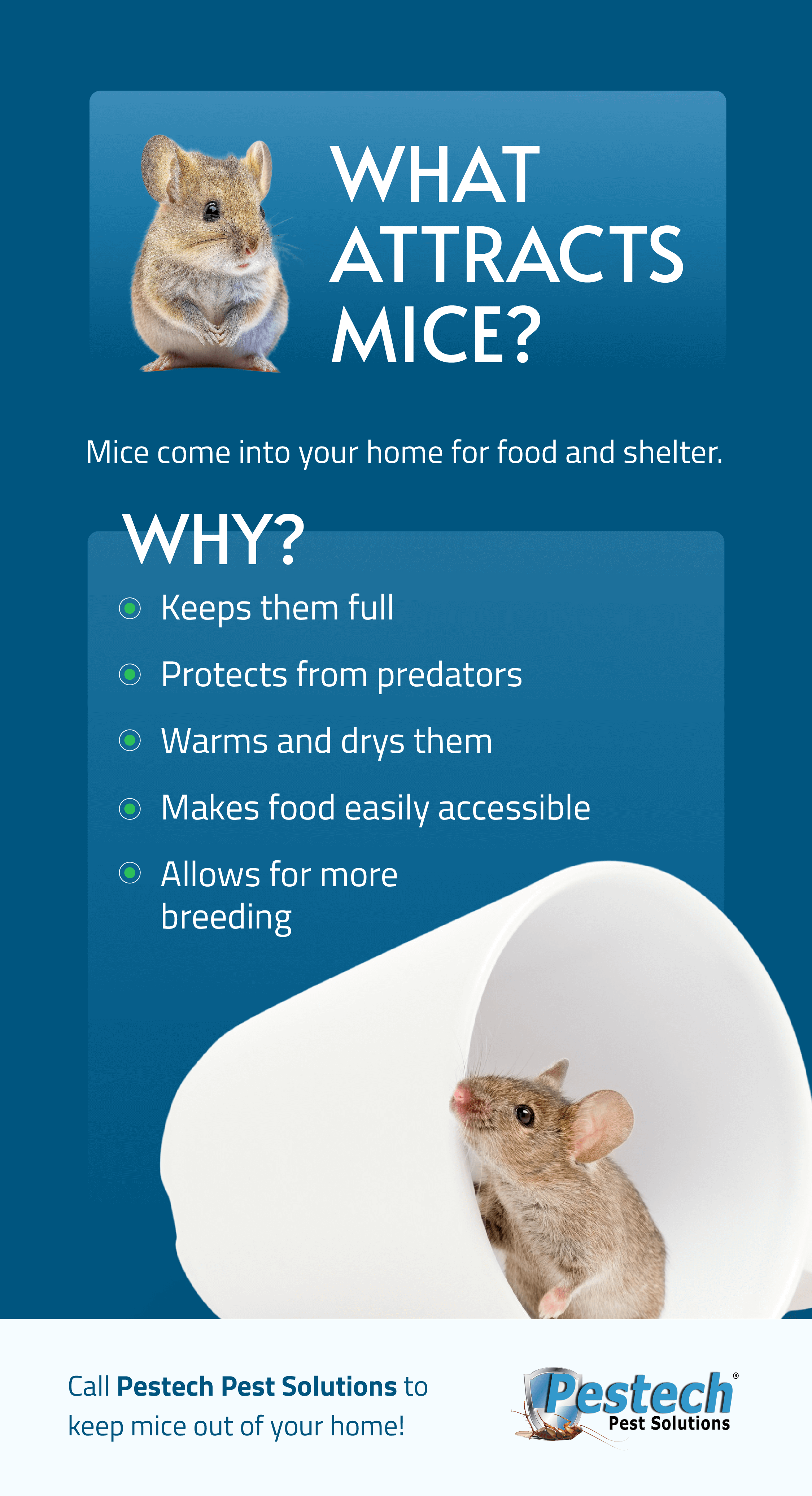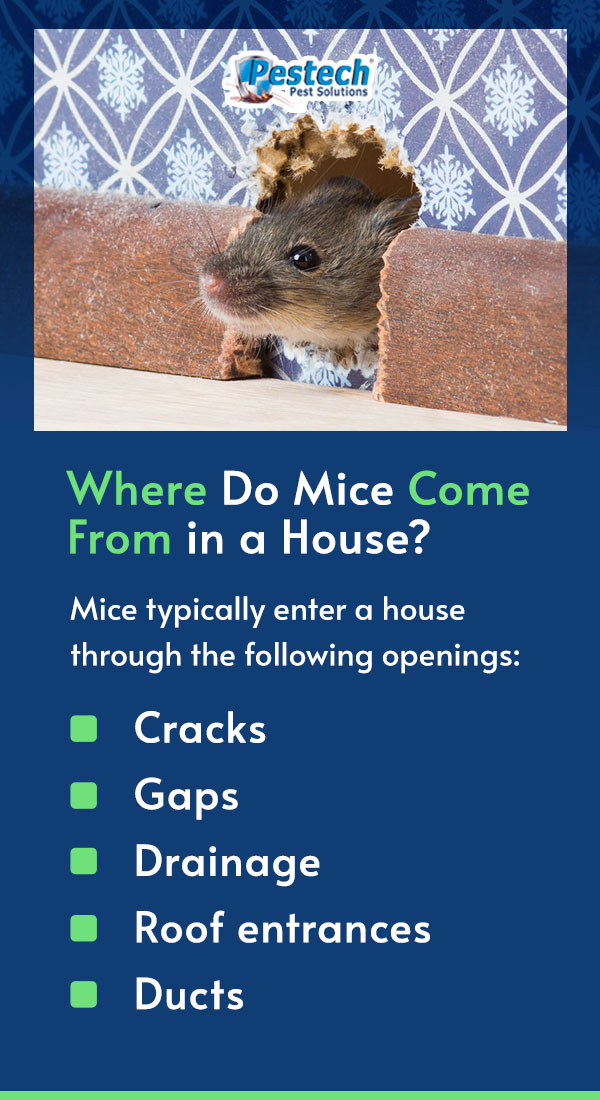Chapter 3: How Mice Get Into Your Home
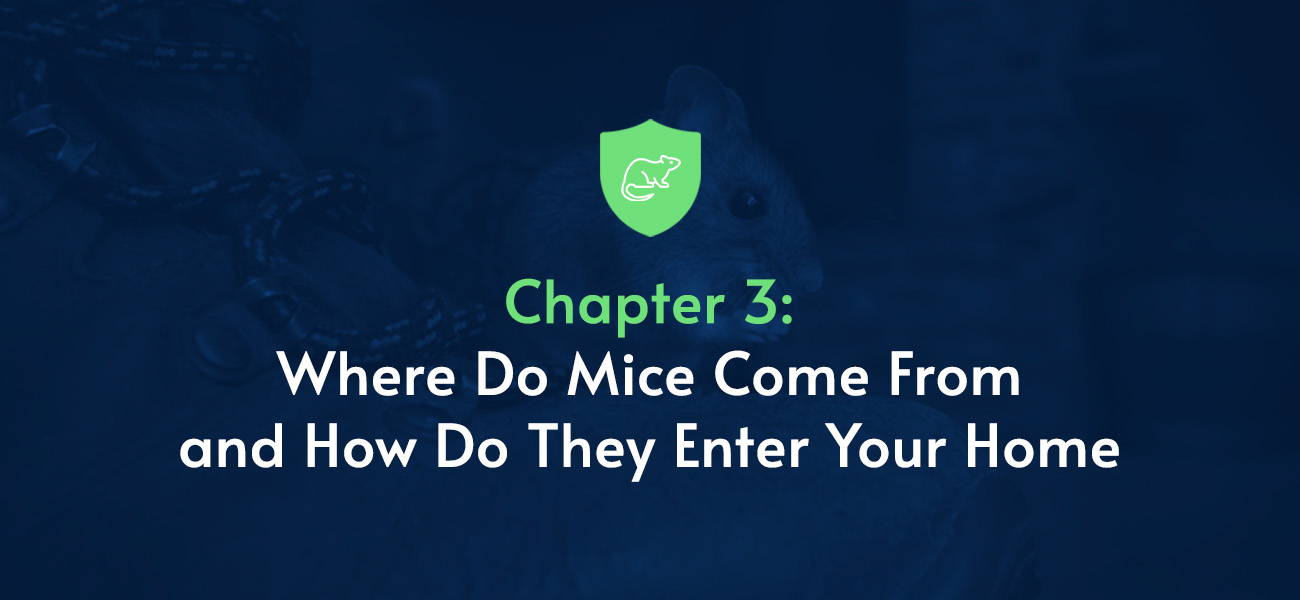
Mice are hardy and adaptable pests. Because full-grown adult mice can infiltrate a building through gaps just bigger than the diameter of a pencil, they are also incredibly sneaky. And they aren’t deterred by a hole that’s too small — if they cannot fit through a hole, they use their sharp teeth to make the gap big enough.
On top of being skilled at breaking in, mice are agile creatures that can climb and run along wires, branches and narrow edges to get almost anywhere. They can also swim and are happy to hang upside down if need be. Few obstacles can get between a mouse and the inside of your business and home if that’s their goal.
This chapter is about understanding why mice are interested in your home, how they get in, what damage they can cause and what keeps them around. It’s important to understand these factors to better protect your business, house, property and establishments from the threat of a mice infestation.
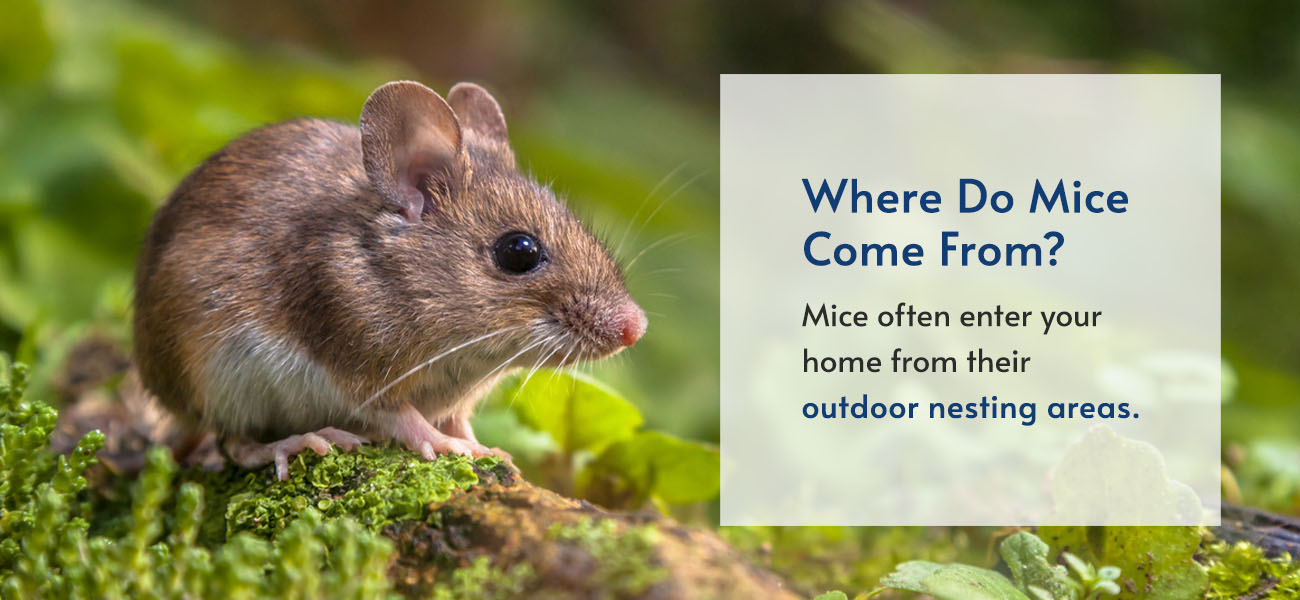
Where Do Pest Mice Come From?
Mice often enter your home from their outdoor nesting areas. Common nesting sites for mice include inside bushy vegetation, underground burrows, tree hollows and tall grass.
House mice, white-footed mice and deer mice are some of the most common species of pest mice. House mice have brown or gray coats and hairy tails. Deer mice have brown coats with white bellies and legs and hairless tails. White-footed mice have reddish-brown fur, white bellies and feet, and their hairless tail is shorter than their bodies.
Mice are considered pests for the following reasons:
- Presence: Finding mice on a property can cause anxiety, panic and shock. Phobias and lack of hygiene make them unwanted pests.
- Disruptive: Mice are often loud when they move around at night — “quiet as a mouse” is really only a saying.
- Costly damage: Mice must constantly gnaw and chew on things to maintain their ever-growing teeth. They commonly gnaw on wood, wires, insulation, furniture, plastic and cardboard, meaning they can be quite destructive to your property. Damaged insulation can let warm air out and raise your energy bills, and mice and can also damage wires, electronics and car parts.
- Ticks and fleas: Mice bring fleas and ticks that could spread to your pets and even to you.
- Diseases: A mouse’s coat and droppings are home to a lot of harmful bacteria. Because of this, mice can spread a host of diseases, including salmonella, rat bite fever and hantavirus.
What Attracts Mice?
Mice often find their way into a building in search of food and shelter. In late autumn and early winter, they want a warm, safe place to rest for the cold season. Hibernating mice nests result in long-term infestations, breeding and other complications. Mice often rest in unused drawers and cabinets and most other types of storage.
What Food Attracts Mice?
Food scraps and any food left in the open are surefire ways to attract mice. While their diet consists mainly of seeds and gains, mice are attracted to many foods humans eat, especially those high in protein, fat and sugar. This type of food fattens them up for winter. However, mice generally avoid cheese — despite what cartoons might have made you think.
Mice eat around 4-5 grams of food per day. Finding this food often requires them to visit feeding areas 20 to 30 times a night. They make a lot of noise during their nightly scavenging, making them disruptive to your sleeping patterns.
Mice are attracted to the following types of food:
- Grains: Mice may go after cereal, pasta, bread, nuts, seeds and other grains.
- Fruit: Mice may scavenge for strawberries, grapes and berries.
- Vegetables: Kale, broccoli and other green or leafy vegetables are also targets for mice.
- Pet food: Dry and wet pet food left out for pets is easy for mice to steal.
- Scraps: Mice go for anything they can get. Clean dirty plates and scraps immediately to lower the chance of attracting or feeding mice infestations.
By knowing what mice enjoy eating, you can choose effective bait for traps. For example, since mice love peanut butter, bacon and cereal, you might use any of these foods as bait. The Maryland Department of Agriculture also suggests caramel corn as an attractive mouse bait.
How Often Does a Mouse Need Water?
Mice only need to drink around 4 milliliters of water each day. They obtain most of their water from the food they eat. Even a small leak in a pipe will be enough to sustain them.
Where Do Mice Come From in a House?
It is in a mouse’s curious nature to explore their environment while they scavenge for food and look for shelter. If they think your home can provide either, they will happily make it their nesting site. Mice typically enter a house through the following openings:
- Cracks: They may look for cracks in concrete, bricks and outside walls.
- Gaps: Gaps around wiring, vents, opened windows and underneath doors allow them to climb through.
- Drainage: Pipes, gutters and drains are easily accessible for mice.
- Roof entrances: Mice may enter a home via uncapped chimneys, vents, roof and wall joints, grating, and damaged shingles.
- Ducts: Mice may also look for unsealed heating and aircon ducts.
What Causes a Mice Infestation?
A mice infestation could intensify if the mice can thrive in your home. Mice are polygamous and breed quickly — most mice have a gestation period of between 19 and 21 days. A single female mouse can give birth to between eight and 10 litters each year, and 10 to 20 pups can be born in each litter. Females can breed just two days after weaning their babies off milk. This means one female mouse could potentially produce 160 babies in a single year. Keeping mice safe and well-fed makes your house an ideal breeding ground for them, turning a small family into a full-scale infestation.
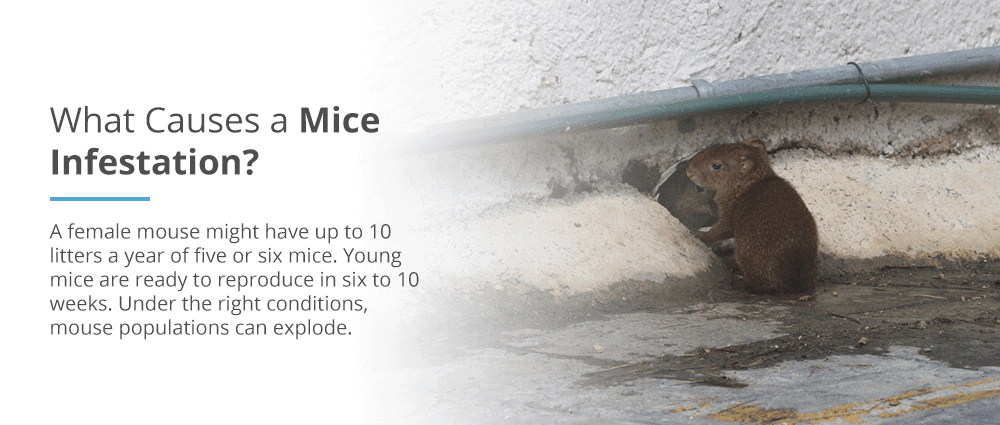
Why Do Mice Keep Coming Back?
If any holes or entrances are available, your home or business is at risk of reinfestation. All mice want the same thing, so remove their ability to enter and survive, and they will stop coming back. Continual maintenance and mouse-proofing are needed to keep infestations away. Mice are adaptable and can live off little, so there is always a chance that they can make a nest in your home or business.
Do Mice Leave on Their Own?
Typically, mice stay if they are guaranteed warmth, safety and access to food. Your building or home is predator-free, protects them from the weather and has food, so they are unlikely to want to leave once they enter. Pestech Pest Solutions has the knowledge and experience to control your pest situations. We can help you control your rodent infestations and stop them from returning.
How Do You Stop Mice From Coming Into Your House?
There are many ways to keep mice out of your house, business, hotel and establishments. Install door sweeps to stop mice coming in under your door, repair weather stripping to keep them from entering through window gaps, and seal any cracks, holes and gaps outside.
The next chapter will cover the different ways to eliminate mice and dive deeper into how to keep them away.

